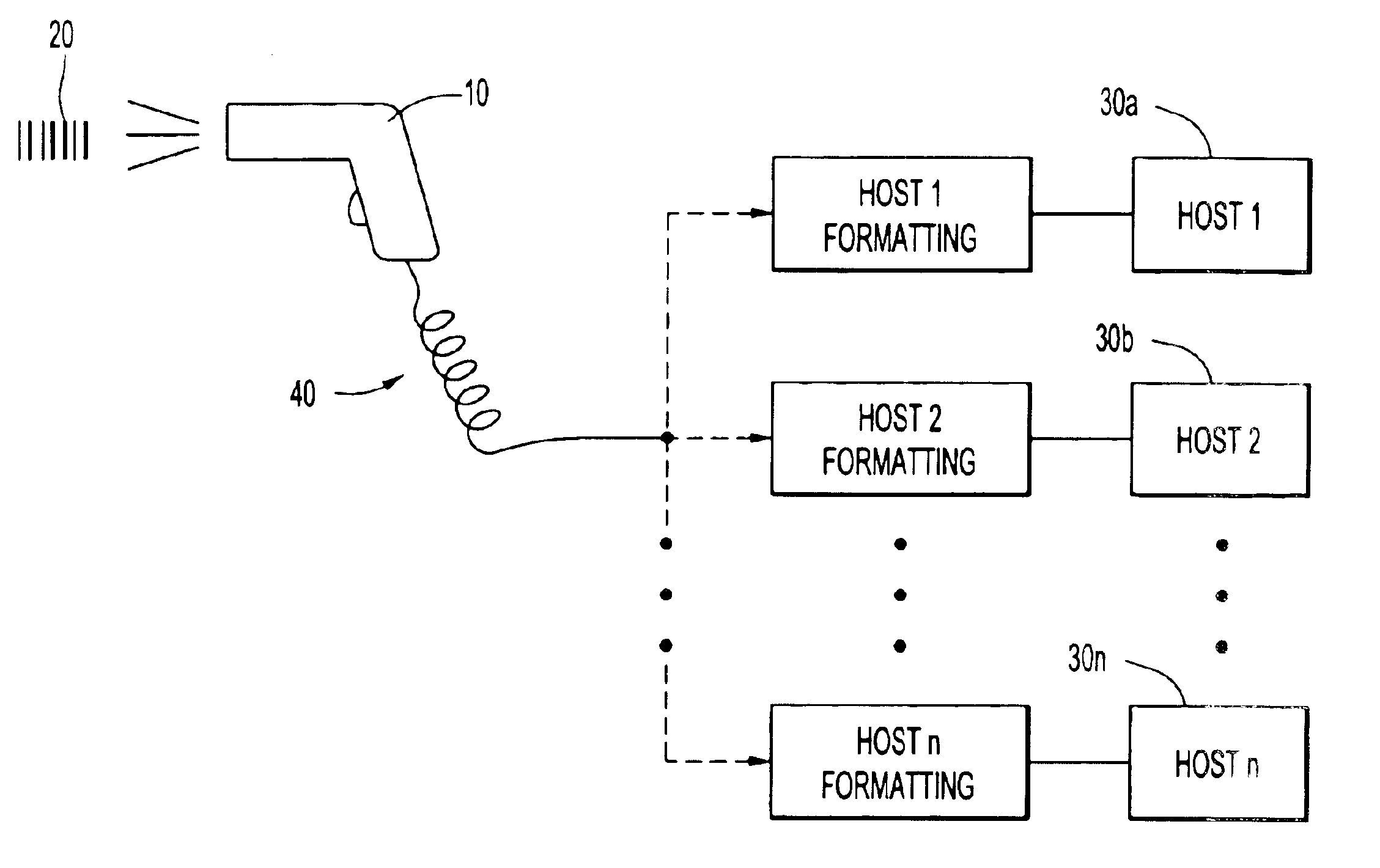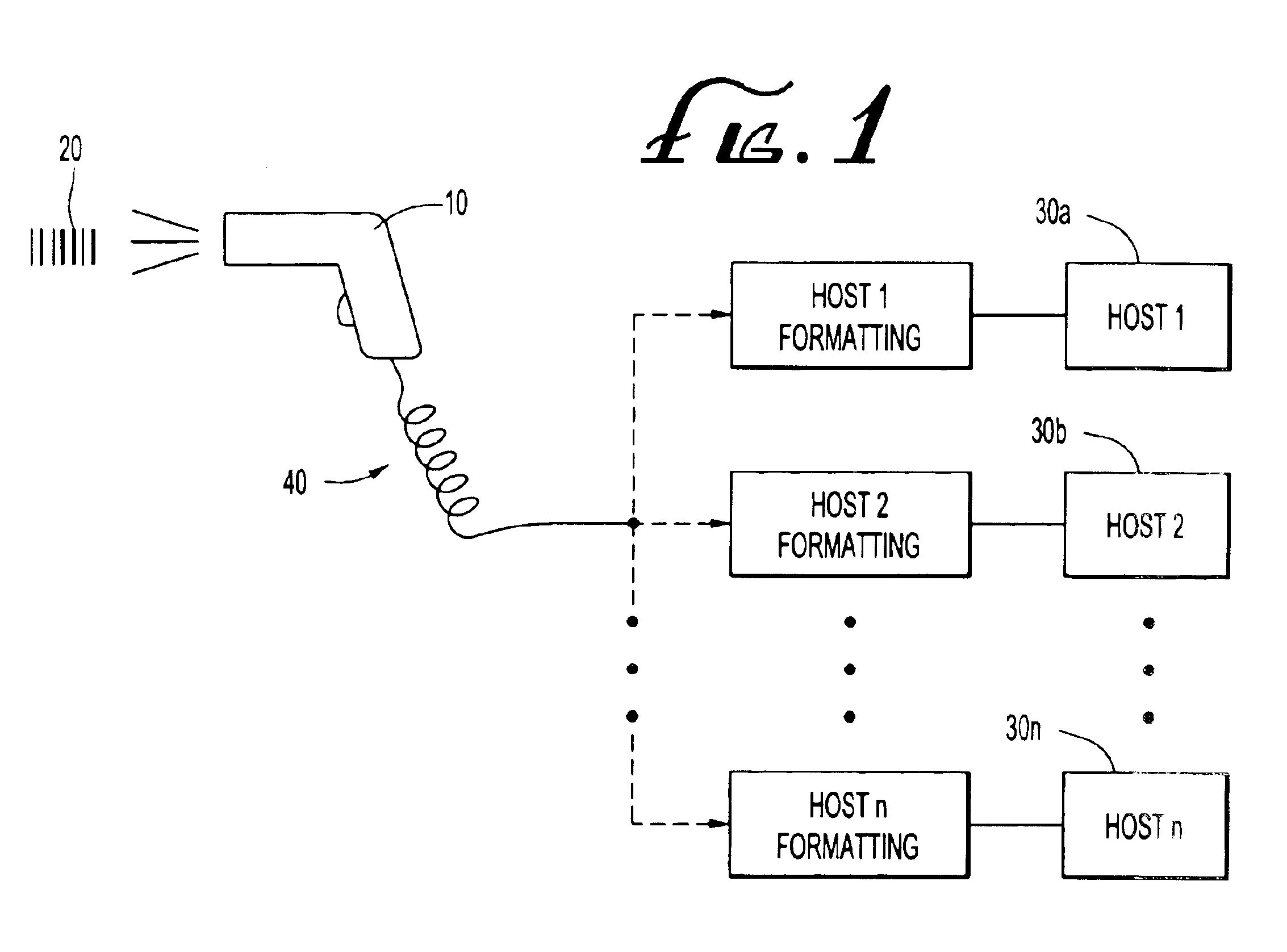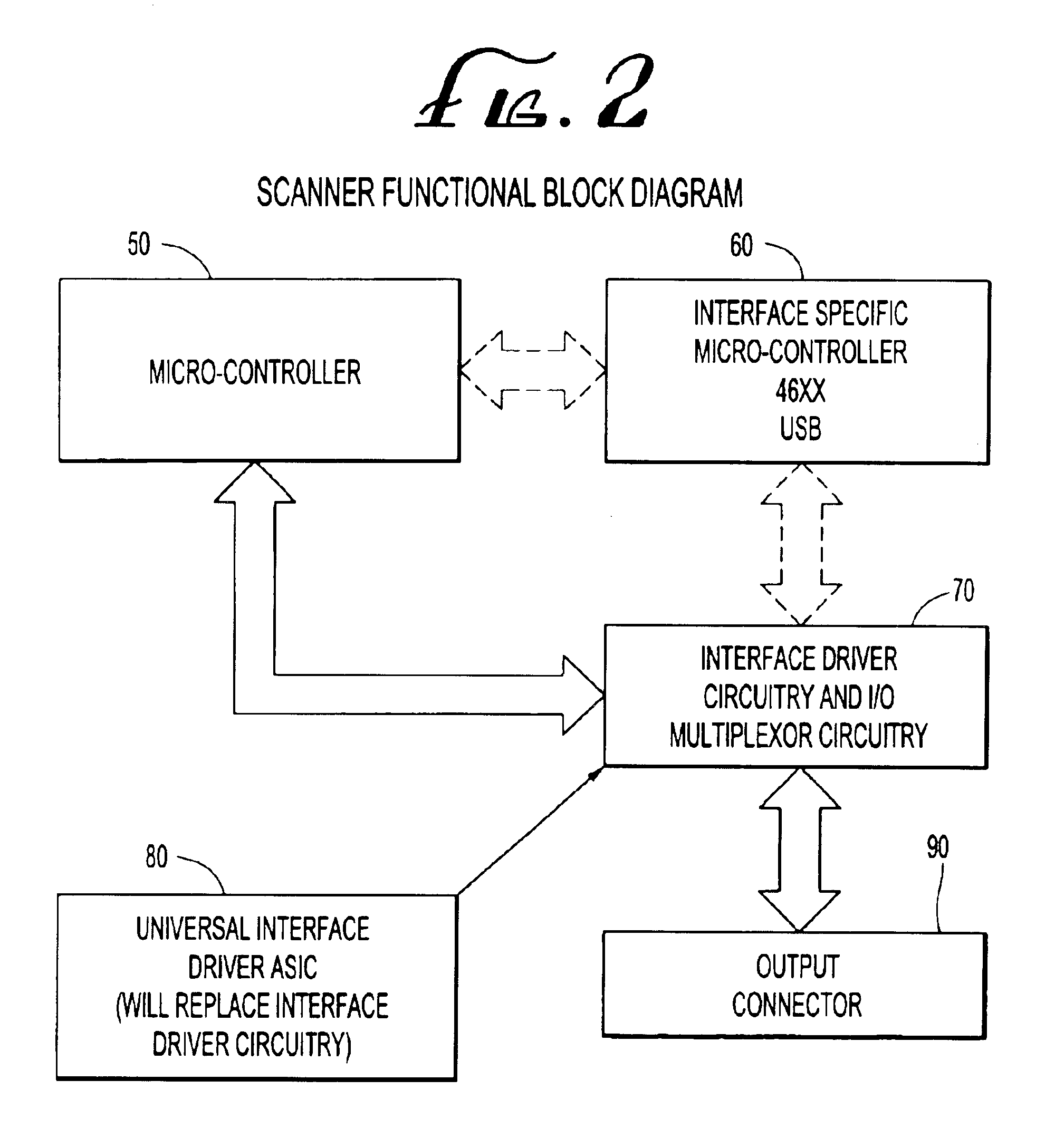Universal interface driver system for data reader
a driver system and data reader technology, applied in the field of data reading devices, can solve the problems of limited functionality of bar code scanning devices compatible with only a single host device interface, single interface support significantly reduces the usefulness of bar code scanning devices, and the replacement of interface boards is a difficult task for the typical user, so as to increase the number of host device interfaces
- Summary
- Abstract
- Description
- Claims
- Application Information
AI Technical Summary
Benefits of technology
Problems solved by technology
Method used
Image
Examples
Embodiment Construction
Preferred embodiments will not be described, with reference as necessary to the accompanying drawings.
FIG. 1 is a block diagram illustrating an example of a handheld data reading device 10 such as a flying spot laser bar code scanner, an imaging data reader (e.g., CCD reader), or other device which is used to scan and potentially translate symbols (such as bar codes 20) into digital signals to be transmitted to any one of a variety of host processing devices 30a, 30b, . . . 30n to which it is connected. The data reading device 10 is operably connected to a host processing device 30a via a host interconnect cable 40. The interconnect cable 40 provides a communication link between the data reading device 10 and the host device 30a, and may also provide the electric power input to the data reading device 10. As indicated in FIG. 1, the data reading device 10 may be attached and operated in conjunction with any one of various host processing devices 30a, 30b, . . . 30n supported by diff...
PUM
 Login to view more
Login to view more Abstract
Description
Claims
Application Information
 Login to view more
Login to view more - R&D Engineer
- R&D Manager
- IP Professional
- Industry Leading Data Capabilities
- Powerful AI technology
- Patent DNA Extraction
Browse by: Latest US Patents, China's latest patents, Technical Efficacy Thesaurus, Application Domain, Technology Topic.
© 2024 PatSnap. All rights reserved.Legal|Privacy policy|Modern Slavery Act Transparency Statement|Sitemap



